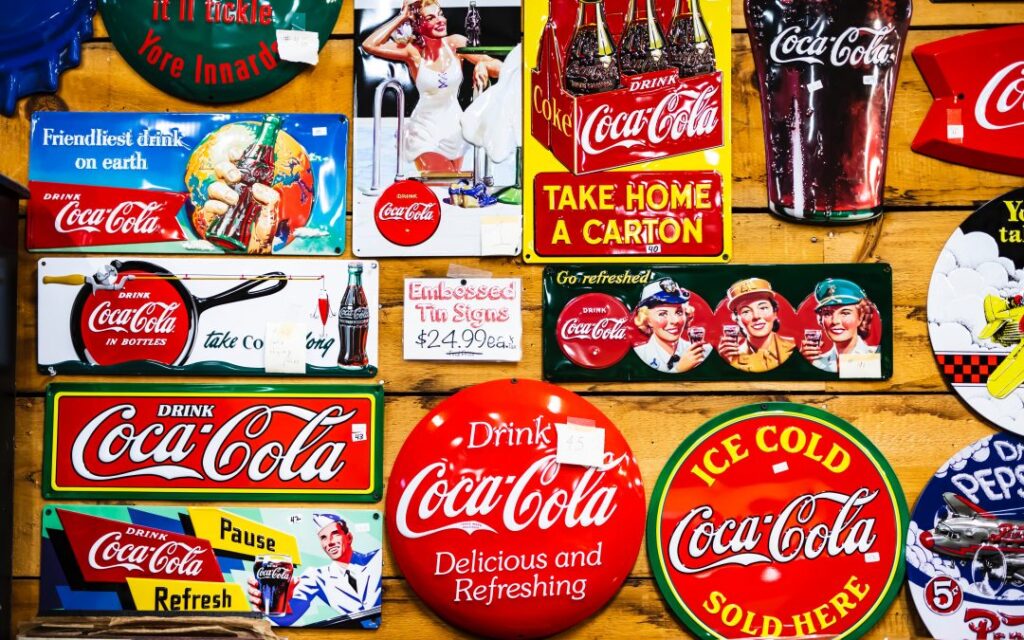Staying Consistent – The Power Of Brand Consistency

For brand credibility and long-term customer relationships, managers should prioritise consistency across all touchpoints.
Consider two people: one consistently fulfils promises and responds predictably, while the other is erratic and untrustworthy.
Imagine now how similar situations may play out in a corporate setting. While one keeps its identity intact and talks to customers in a consistent manner, the other gives off a confused and inconsistent impression with several brand communications.
In this situation, whose company’s credibility do you value more?
Consistent branding is built on trust. Customers are more likely to do business with a company that has a consistent, powerful brand identity. The company’s high-quality products and services reassure customers and highlight their dedication.
Brand consistency does double duty: it establishes credibility and differentiates your company from the competition. Clients will find it easier to remember your brand, showcasing your distinctiveness. Consistent branding helps build strong associations with your brand, which in turn drives client loyalty by highlighting your key beliefs and capabilities.
When deciding how to position their brands, the majority of leadership teams consider “trustworthiness” to be the most important personality quality. To make this choice, customers must have faith in the brands they interact with. When engaging with brands, consumers seek clarity and assurance of satisfaction.
Maintaining a unified brand identity across all mediums requires that your company’s voice, visuals, and messaging be consistent. To build a solid reputation for the brand among current and potential consumers, this strategy is essential. Brand consistency reinforces a company’s identity in all aspects of its operations, from advertising to internal communications.
Beyond simple identification, consistent branding promotes a cohesive experience across the consumer journey. Because of this unity, your brand may stand out in its particular market, which boosts its competitiveness and appeal to the target demographic.
However, brands that display total inconsistentness across their offerings, whether in terms of products, services, or physical locations, may be rather confusing. Imagine, for example, a fast-food restaurant chain whose customers lose faith because the menu items or meal quality differ from one restaurant to another. Similarly, picture a business that has built its reputation on long-lasting, high-quality items abruptly introducing lower-quality substitutes, leading to consumer bewilderment and distrust.
Touchpoints
Consistency across many dimensions is a vital challenge for brand managers. This includes:
- Standard of Quality Overall:
When the quality is consistent, customers have more faith in the brand and its trustworthiness.
- Service Quality Level:
Consistent service standards across all locations boost both customer satisfaction and the brand’s image.
- Product Features and Functionality:
Ensuring that product offers are consistent allows consumers to enjoy the advantages and experiences they anticipate.
- Availability of Products:
Making sure things are always available helps avoid customer disappointment and dissatisfaction.
- Facilities at the Site:
Maintaining consistent facilities helps to build a favourable reputation for the company.
- Hygiene:
Consistent adherence to cleaning standards across all locations helps maintain a brand’s reputation and consumer trust.
- Consistency of Flavour:
Product dependability and customer satisfaction are guaranteed by consistent flavour profiles.
- Longevity and Dependability Scopes:
Consistent product performance strengthens brand trust and loyalty.
- Reliability in Timing:
Punctual service and delivery uphold the brand’s reliability and client satisfaction.
The reliability of brand experiences is crucial to customer loyalty. Inconsistency compromises both brand integrity and customer trust. So, to strengthen the brand’s confidence and encourage long-term interactions with consumers, brand managers should prioritize consistency across all touchpoints. A brand runs the danger of becoming irrelevant and untrustworthy if it isn’t consistent with its messaging and actions.
Branding Elements
To make sure your brand is consistent in every way, it’s a good idea to set some rules. To maintain a consistent and easily identifiable brand identity, these guidelines specify how to use different brand aspects in promotional materials. Here is how a set of brand rules may make everything uniform:
- Audience Elements:
By clearly defining your target audience’s personas, you can better tailor your brand’s messaging and design to your target consumers’ tastes and qualities. Your branding efforts will be more effective if you take the time to learn about your target audience’s demographics, hobbies, and habits.
- The Aesthetics:
Colour Palette:
Colour psychology shows that repeated exposure to the same hues may increase consumer loyalty to a brand. To ensure consistency across all brand assets, brand standards outline the authorised colour palette.
The Logo:
To keep it visually consistent and easily identifiable across all platforms and applications, there are detailed instructions on how to use the logo.
Fonts:
Consistency in written communication is maintained by prescribed primary and secondary fonts, which enhance brand identification.
Images:
The purpose of having guidelines is to make sure that the pictures used in branding materials are consistent with the brand’s message and identity.
- Communication and Language Components:
Tone of Voice:
To maintain cohesion in the brand’s representation across all touchpoints and mediums, brand standards define the brand’s personality and emotional inflexion.
Choice of Words:
When the target audience can relate to a brand and its terminology and sentence patterns are consistent, the brand’s coherence improves.
Regularity of Contact:
To have a continuous presence without boring or turning off consumers, guidelines outline when and how often brand messages should be sent.
Examples
By following these brand standards, businesses can strengthen their brand identity, gain consumers’ trust, set themselves apart from competitors, and cultivate brand loyalty and awareness.
- Apple

Visual Consistency
Whether it’s their goods, packaging, or marketing materials, Apple always sticks to a minimalist design ethos. Elegant and sophisticated characterise Apple’s branding, which is reflected in the company’s products and marketing materials.
Communication Consistency:
Across all forms of communication, the brand continuously highlights innovation, originality, and user-friendliness in its messaging. At every stage of its marketing, from product launches to social media posts, Apple emphasises its dedication to providing an exceptional customer experience.
Consistency of the Product:
The quality, dependability, and user-friendliness of Apple products are well known. The brand’s product reliability further solidifies its position as an industry leader in innovation and quality.
- Nike

Visual Consistency
Throughout the globe, people can recognise Nike products by their vibrant, eye-catching designs and famous swoosh emblem. The visual identity of the company is constant and harmonious across all mediums, be it footwear, clothes, or marketing materials.
Communication Consistency:
Themes of strength, athleticism, and never giving up are central to the Nike brand message. Advertising campaigns showcasing athletes and the company’s famous “Just Do It” motto never fail to move and inspire viewers.
Consistency of the Product:
Regardless of the product line, Nike’s dedication to performance and quality is apparent. Every Nike product, from running shoes to basketball jerseys to gym gear, is known for its innovative features and top-notch craftsmanship.
- Coca Cola

Visual Consistency
For decades, the red and white colour scheme and distinctive logo of Coca-Cola have been mostly intact. Because of this visual uniformity, Coca-Cola has become a well-known and respected brand across the world.
Communication Consistency:
Optimism, community, and fond memories are central to Coca-Cola’s advertising campaigns. Coca-Cola routinely creates favourable feelings and builds emotional ties with its audience, whether it’s through its timeless “Share a Coke” campaign or touching Christmas advertisements.
Consistency of the Product:
The purity and consistency of Coca-Cola flavour are well known around the globe. You may savour the same invigorating taste and sensation from a Coke anywhere in the world, not only in the US.
These companies’ long-term success and loyal customer base are a result of their dedication to maintaining a consistent visual identity, message, and product quality.




1 Comment